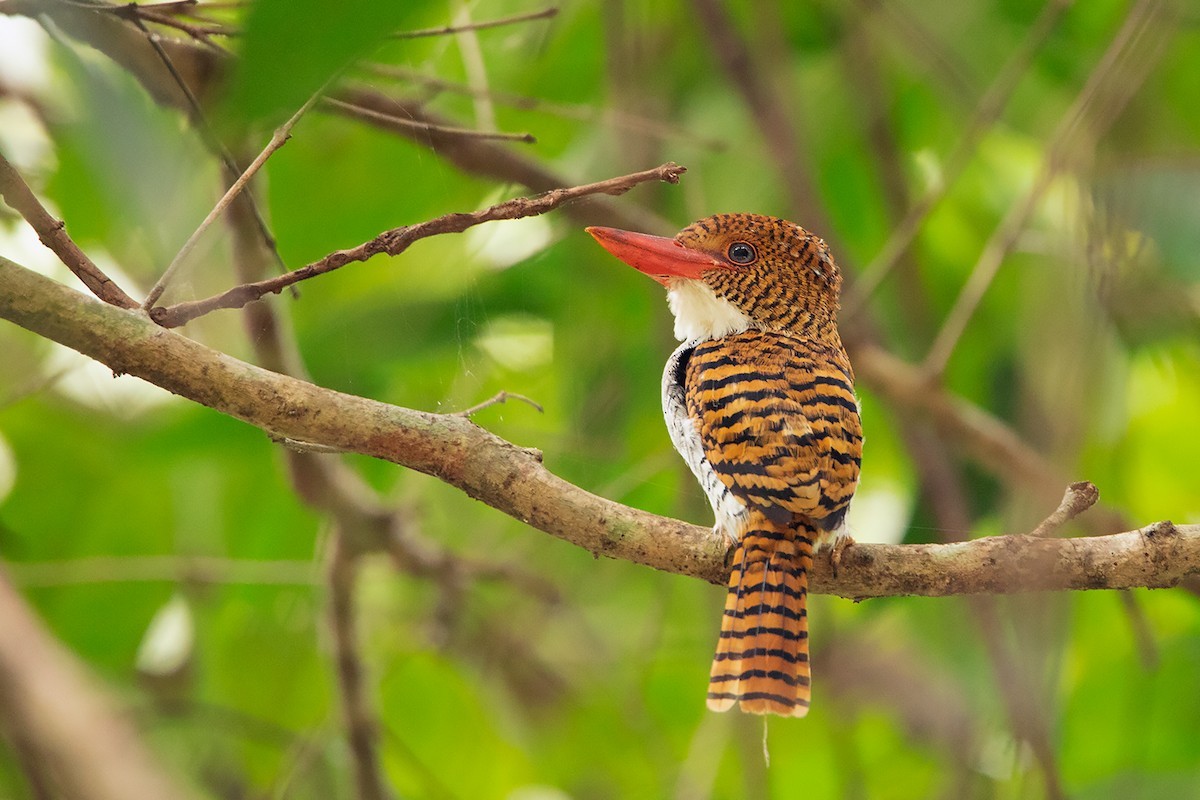Banded Kingfisher
A species of Banded Kingfishers Scientific name : Lacedo pulchella Genus : Banded Kingfishers
Banded Kingfisher, A species of Banded Kingfishers
Botanical name: Lacedo pulchella
Genus: Banded Kingfishers
Content
Description General Info
 Photo By Ayuwat Jearwattanakanok
Photo By Ayuwat Jearwattanakanok Description
The banded kingfisher is a 20 cm (7.9 in) long with a sturdy red bill and a short crest which is slowly raised and lowered. It shows striking sexual dimorphism compared to most of its relatives. The adult male has a chestnut forehead, cheeks and nape, and a bright blue cap. The rest of the upperparts, wings and tail are black with blue bands. The breast, flanks and undertail are rufous, and the central belly is white. The adult female is equally striking, with black-and-rufous-banded upperparts, and white underparts with some black bars on the chest and flanks. Young birds are duller than the adult of the same sex, have a brown and orange bill, and dusky barring on the underparts. The call is a long whistled wheeeoo followed by 15 repetitions of chiwiu in 17 seconds, the second syllable gradually fading away. The banded kingfisher will respond to imitations of its call. 
Size
20 cm
Nest Placement
Ground
Habitat
The habitat of banded Kingfisher predominantly consists of densely wooded areas, where they are often found in primary lowland and hill forests, as well as bamboo and swamp forests. These birds adapt to a range of wooded environments, including secondary growths and can sometimes be observed in plantation areas. However, banded Kingfisher typically needs robust forest structures, as evidence suggests they are less common in regions with a history of heavy logging or forest recovery. Their presence is not tied to water bodies, underscoring their preference for forest habitats over aquatic or riparian zones.
Dite type
Insectivorous
General Info
Feeding Habits
Bird food type
Behavior
This is a bird of lowland rainforest found up to 1,700 m in Brunei, but normally below 1100 m altitude in the rest of its range. Unlike most kingfishers, it does not need pools or streams in its territory. The nest is a hole in a rotting tree trunk, or sometimes in the spherical nest of tree termites. Two to five white eggs are laid. In Thailand the eggs are laid between February and May. The banded kingfisher hunts large insects and occasionally small lizards, usually taken in the trees, but sometimes from the ground. 
Distribution Area
The species occurs in Myanmar, Thailand, Cambodia, Vietnam, Laos, Malaysia, Sumatra, Java and Brunei. It is extinct in Singapore. 
Species Status
This species is uncommon but widespread in much of its range. It is rare in Java, very rare in Sumatra and extinct in Singapore. 

 Photo By Ayuwat Jearwattanakanok
Photo By Ayuwat Jearwattanakanok